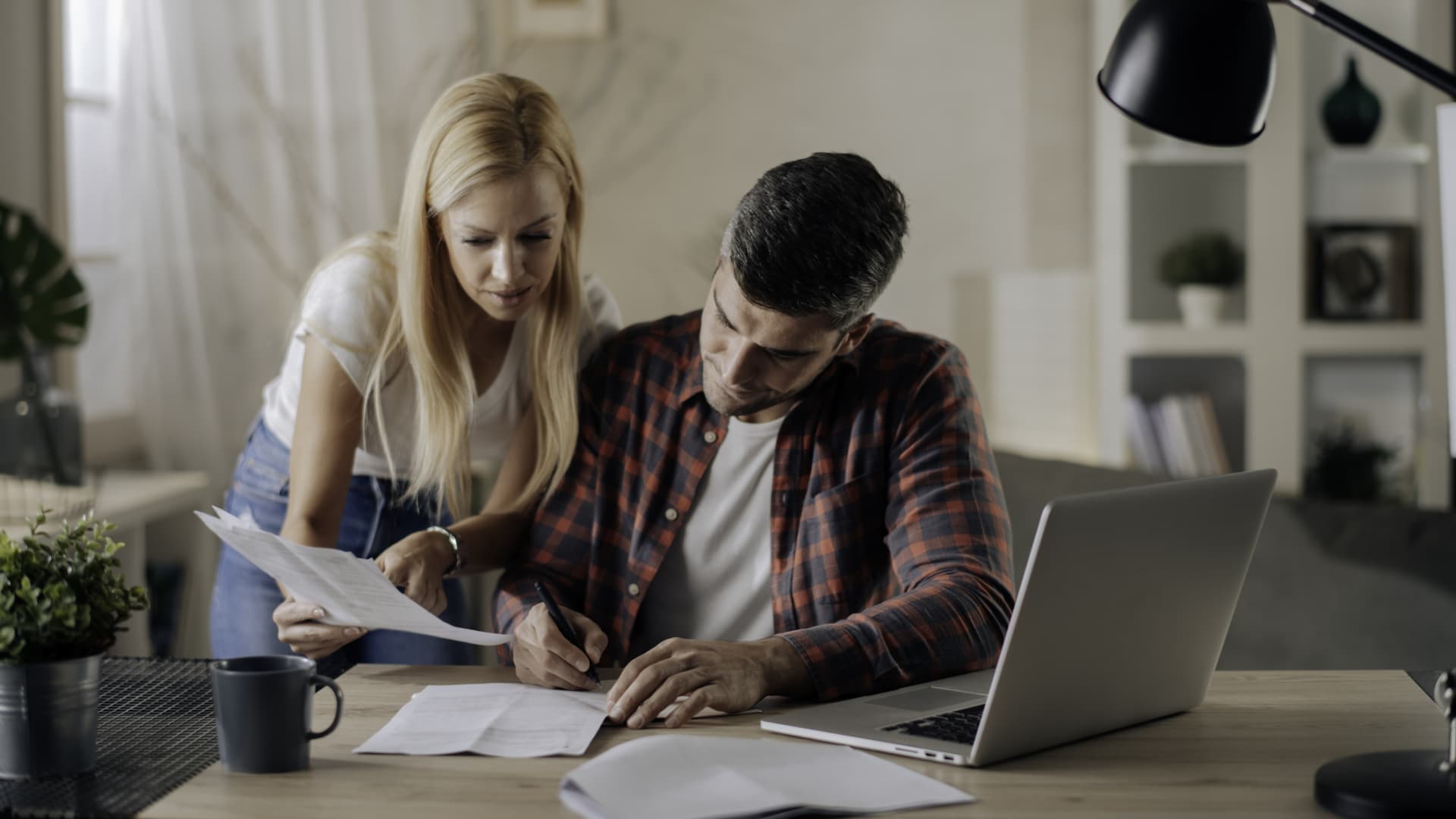Aspiring homeowners say they face two major obstacles to buying. Here’s why 20% say it’ll ‘never’ happen
3 min read
Milos Dimic | E+ | Getty Images
With various factors keeping homeownership out of reach for Americans, many aspiring homeowners are pessimistic, doubting they will ever achieve that goal.
Would-be buyers point to two major obstacles holding them back, according to a new Bankrate report. About half, 51%, point to a high cost of living, and 54% say they have insufficient income given where home prices are now.
The site polled 2,267 U.S. adults, 864 of whom are aspiring homeowners, in late January. Bankrate defined aspiring or prospective homeowners as those who have either owned a home in the past but currently do not, as well as those who have never owned a home but wish to someday.
More from Personal Finance:
‘If your parents are homeowners, you’re more likely to be a homeowner’
Here are the top 10 hottest housing markets in 2024
How to reduce your capital gains tax bill after selling a home
When asked about their ability to buy a home, 20% of aspiring owners said they may “never” be able to save enough for the down payment and other costs. Meanwhile, 30% said it could take them at least five years, while 10% said it could take them a decade or longer.
“That’s a long time for people to wait,” said Mark Hamrick, senior economic analyst and Washington bureau chief of Bankrate. “‘Never’ is a long time, [and] so can be five or 10 years.”
Mortgage rates cross 7% again
High mortgage rates can contribute to aspiring homeowners’ feeling that their income is holding them back from buying in the current market.
As interest rates rose sharply in 2022, the average cost of a monthly mortgage payment swelled to $2,045 in December 2022, a 46% increase from $1,400 a year prior, according to a September report from the Consumer Financial Protection Bureau. More people were denied on mortgage applications for insufficient income in 2022 than in 2021.
Last week, the 30-year fixed rate mortgage increased to 7.06% from 6.87%, a disappointing sight for those who were expecting more pronounced declines in the early year, Hamrick said.
While there are predictions that suggest rates may begin to come down this year, “a series of unexpected events,” like the Covid-19 pandemic, have made interest rates both spike and sharply decline in recent years, he said.
“We have to acknowledge a high degree of uncertainty even though we want to understand there’s a baseline or expectation within reason,” Hamrick said.
Homeownership costs go beyond the mortgage
Aspiring buyers need to think beyond the down payment as they consider their timeline to homeownership. They must be able to meet new obligations that come with owning a home on top of other financial goals, said Hamrick, who underscored the need for emergency savings.
“Homeownership is not a singular event that does not have other implications on finances,” he said. “There’s no doubt that there will be repairs, maintenance and upgrades and renovations required as long as they are owning a home.”
If the homeowner is not prepared for such repairs and maintenance costs, these additional expenses can lead to financial strain, making it harder to save toward other goals and indirectly making you “house poor,” certified financial planner Preston D. Cherry recently told CNBC. Cherry, the founder and president of Concurrent Financial Planning in Green Bay, Wisconsin, is also a CNBC FA Council member.
It could be worse, Hamrick added: “It’s not only a question of being house poor, but it’s question of taking on more debt because of the lack of flexibility in household finances.”
In addition to high cost of living and low income, aspiring homeowners also cited credit card debt (18%) and student loan debt (10%) as barriers to homeownership, the Bankrate report found.







